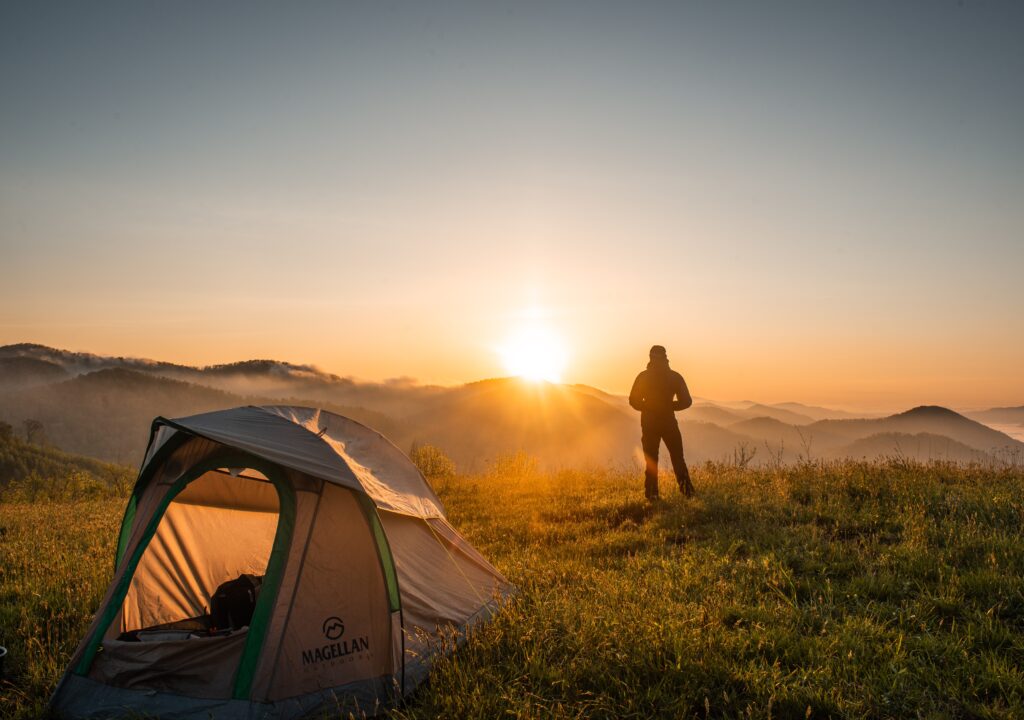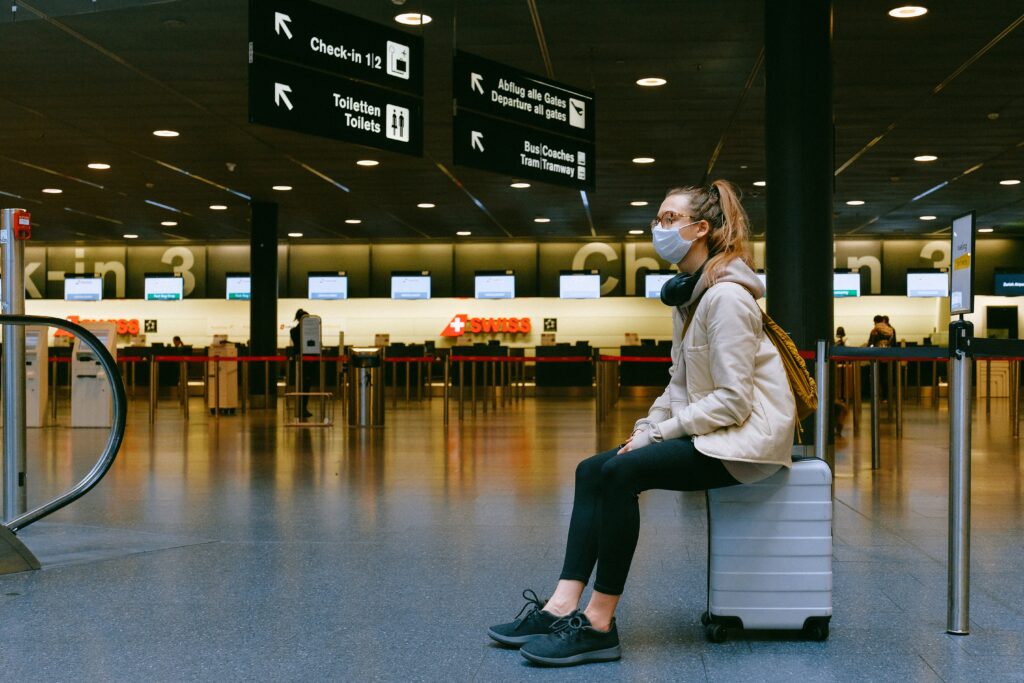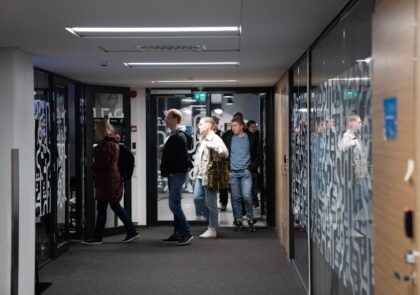
World is changing faster than ever. Global threads, COVID-19 pandemic, complex operating environments and the amount of information produced every day create multilayered processes and services. Our needs and behavior change as new technology, phenomena and trends emerge. This article discusses how we should relate to the future of travel and how futures thinking and analyzing megatrends can help in creating safer, sustainable and customer friendly nature travel experiences. Theme of future travel has been studied as a part of a project Kurenniemi – cultural value of Russia and Finland through M. Agricola trail.
Authors: Daria Benabad & Katariina Pakarinen
One way for tackling the unknown is to observe, identify and analyze emerging signals and current trends and use them for creating future scenarios. Futures thinking allows us to prepare in advance for the upcoming changes so the future will not cause so much uncertainty. It also allows us to reflect goals and make long-term plans accordingly. (Institute for the Future 2019.)
Megatrends are strongly linked to futures thinking and forecasting. Megatrend is a general trend consisting of several phenomena. It has a global impact and a long history which gives us an idea of the changes in the future. Megatrends help us with refining more accurate trends and weak signals. (Sitra 2022.) Current megatrends include climate change, population growth, demographic change, urbanization, globalization, growth in wealth and consumption, and digitalization and technological development. (Hiltunen 2021, 15.) Safety has also become one of the rising trends due to the COVID-19 pandemic and the war in Ukraine.
Climate change and sustainability
When discussing tourism, climate change is often the first megatrend to emerge in the debate. It is estimated that tourism industry produces 8% of global greenhouse gas emissions. Transport, food and shopping are significant contributors. Before the COVID-19 pandemic researchers stated that global tourism will increase carbon emissions from 4.5Gt to 6.5Gt by 2025. (Faturay et al. 2018.) The vast growth has been slightly slowed down by the pandemic. In 2020, scenarios indicated that depending on the duration of the crisis, potential decrease of international tourism could range between a 60-80%. (OECD 2020.) Presumably this decrease is not permanent – tourism is expected to recover to 2019 levels by the year of 2023 (Behsudi 2020). However, this prediction does not count for the impact of the Ukraine crisis and the loss of Russian tourists.
Environmentally conscious travelers are expecting more sustainable supply from the tourism industry. Two out of three thinks that companies should offer more sustainable services and products and more detailed information about the values of companies. (Pöysä 2021.)
Globalization and digitalization
Globalization and digitalization also shape the way we travel. Due to technological development knowledge, goods, people and jobs move around the world faster and more flexibly. New innovations, artificial intelligence, applications and services make travelling easier and more accessible. (Hiltunen 2021, 30-33.)
Because of urbanization the importance of nearby nature is growing. Changing work culture, flexibility in time management and new digital solutions increase and diversify the use of outdoor activities. People are more often living in multiple locations and aim to combine work and leisure. The benefits of nature are better identified, and people seek relaxation and well-being from the nature (Metsähallitus 2020).
Population growth and demographic change
The OCED estimated that rising levels of education and wealth in developing countries, especially China and India will increase dramatically the number of tourists. This demographic change brings new types of consumer groups and needs for tourism. For example, still nearly 80 percent of the world’s population has never been on a plane. (Hiltunen 2021, 26-27.)
It is estimated that by 2030, the younger population will make roughly 300 million international trips in a year. Young people are an interesting traveler group since they push boundaries, and experiment with the new. (UNWTO 2014.) At the same time number of elderly travelers is increasing. They have more time and money to travel, and they expect accessible destinations. (Hiltunen 2021, 21-23.)
Safety
Finnish Ministry of the Environment conducted a study which reviewed nationwide data collected from visitors of national parks. The purpose was to find out if national parks, reservation areas and trails require changes to instructions or services to ensure the comfort and safety of users. Interesting trends were found. For example, the average age of visitors has slightly risen as well as the share of those who are over 65 years old. Sizes of traveler groups are smaller than before and number of people who are hiking alone or with inner family has increased. Free independent tourism (FIT travel) as the opposite to mass travel will continue to grow. (Metsähallitus 2020.)
While visiting national parks, more people tend to stay and use the services of the surrounding areas. There is also a clear increase in activities like cycling, hiking with dogs and camping. However, stays in the tourist areas are shortened. Those who are not accustomed to moving in nature may need special support. Equipment improves all the time, but skills and understanding of conditions vary between visitors and misjudging skills can lead to accidents. (Metsähallitus 2020.)
During the pandemic, health and hygiene have been on everyone’s radar. Nature destinations, service providers and tour operators have been forced to develop new ways to ensure visitors safety. Since travelers are used to keeping a distance from others, travel destinations may be chosen more often in the future depending on whether it is possible to keep stay away from the others. Disinfecting hands, wearing masks, and measuring passengers heat may become a permanent part of future travel. (Pöysä 2021.) Travelers might also consider the effects of the Ukrainian crisis while picking their travelling destinations.

Image 1. Wearing masks and disinfecting hands has become the new normal. (Shvets 2020)
Need for unique and individual experiences
According to several scenarios, traveler in the future wants unique and individual experiences. In addition, well-being and virtuality are important themes in the future as well as responsibility and sustainability. More people prefer to travel in their home country rather than abroad. It can be important for some travelers to get space from other people and therefore the popularity of small destinations is also growing. (Business Finland 2020.) Internationally well-being tourism is one of the most important growth sectors (Renfors 2021).
National parks in Finland have become increasingly popular as travelling aboard has been difficult or advised against during the pandemic. Travelers have been looking for real outdoor experiences in contrast to the time spent indoors. In Finland the number of visitors to certain nature sites has risen so high that Metsähallitus has started to direct people to different sites (Pöysä 2021).
The slower economic growth in the next few years will enable long-distance tourism for fewer travelers and they will become more considerate when planning their trip. Nature without rush hours and with accessible services can be an important competitive advantage in the future. (Metsähallitus 2020.) This offers interesting opportunities for national parks – such as the upcoming Kurenniemi national park in Russia.
References
Behsudi, A. 2020. Tourism-dependent economies are among those harmed the most by the pandemic. International Monetary Fund. Cited 17 March 2022. Available at https://www.imf.org/external/pubs/ft/fandd/2020/12/impact-of-the-pandemic-on-tourism-behsudi.htm
Business Finland. 2020. Matkailija 2030 -skenaariot. Cited 17 March 2022. Available at https://www.businessfinland.fi/490529/globalassets/julkaisut/visit-finland/tutkimukset/2021/matkailija-2030–skenaariot.pdf
Faturay, F., Geschke, A., Lenzen, M., Malik, A., Sun, Y. & Ting, Y. 2018. The carbon footprint of global tourism. Cited 17 March 2022. Available at https://www.nature.com/articles/s41558-018-0141-x
Hiltunen E. 2021. Matkailun tulevaisuus -raportti. Matkailusäätiö. Cited 12 April 2021. Available at https://matkailusaatio.fi/wp-content/uploads/2021/09/2FINAL_hki_matkailusaatio_matkailun_tulevaisuus_raportti_V211019_SIVUT.pdf
Institute for the Future. 2019. Ready, Set, Future! Introduction to Futures Thinking. Cited 17 March 2022. Available at https://www.coursera.org/learn/introduction-to-futures-thinking/home/welcome
Metsähallitus. 2020. Asiakasturvallisuuden riskienhallinta: Metsähallitus Luontopalvelut
31.12.2020. Cited 17 March 2022. Available at https://www.luontoon.fi/documents/10550/59432913/Turvallisuusselvitys_YMlle_31122020.pdf/9204d340-efb8-8f5b-3409-c7c1e20f68bd?t=1611124477582
OECD. 2020. Tourism Policy Responses to the coronavirus (COVID-19). Cited 17 March 2022. Available at https://www.oecd.org/coronavirus/policy-responses/tourism-policy-responses-to-the-coronavirus-covid-19-6466aa20/
Pöysä, A. 2021. Miten matkailemme koronan jälkeen? Apu-lehti. Cited 17 March 2022. Available at https://www.apu.fi/artikkelit/miten-matkailemme-koronan-jalkeen?utm_source=mo-uutiskirje&utm_medium=email&utm_campaign=vko-6-20
Renfors, L. 2021. Hyvinvointimatkailu on yksi kansainvälisen matkailun nopeimmin kasvavista osa-alueista. Business Finland. Cited 17 March 2022. Available at https://www.businessfinland.fi/suomalaisille-asiakkaille/palvelut/matkailun-edistaminen/tuotekehitys-ja-teemat/hyvinvointimatkailu
Shvets, A. 2020. Cited 17 March 2022. Available at https://www.pexels.com/fi-fi/kuva/kaupunki-naine-matkustaminen-lentokentta-3943882/
UNWTO & Wyse Travel Confederation. 2014. The power of youth travel. Cited 17 March 2022. Available at https://www.wysetc.org/wp-content/uploads/2014/12/wysetc-unwto-report-english_the-power-of-youth.pdf
Authors
Daria Benabad, works as a project planner in the Business Unit of LAB University of Applied Sciences. She specializes in digital marketing and event planning.
Katariina Pakarinen, M.A. (Design) works as a RDI specialist / service designer in LAB University of Applied Sciences, Institute of Design and fine arts. Katariina is specially interested in nature travel, service design and futures thinking.
Illustration: https://www.pexels.com/fi-fi/kuva/aamu-maisema-luonto-taivas-2398220/
Photo by Cliford Mervil from Pexels (CC0)
Published 29.3.2022
Reference to this article
Benabad, D. & Pakarinen, K. 2022. How futures thinking and analyzing megatrends can help with developing nature trails? LAB Pro. Cited and date of citation. Available at https://www.labopen.fi/lab-pro/how-futures-thinking-and-analyzing-megatrends-can-help-with-developing-nature-trails/






